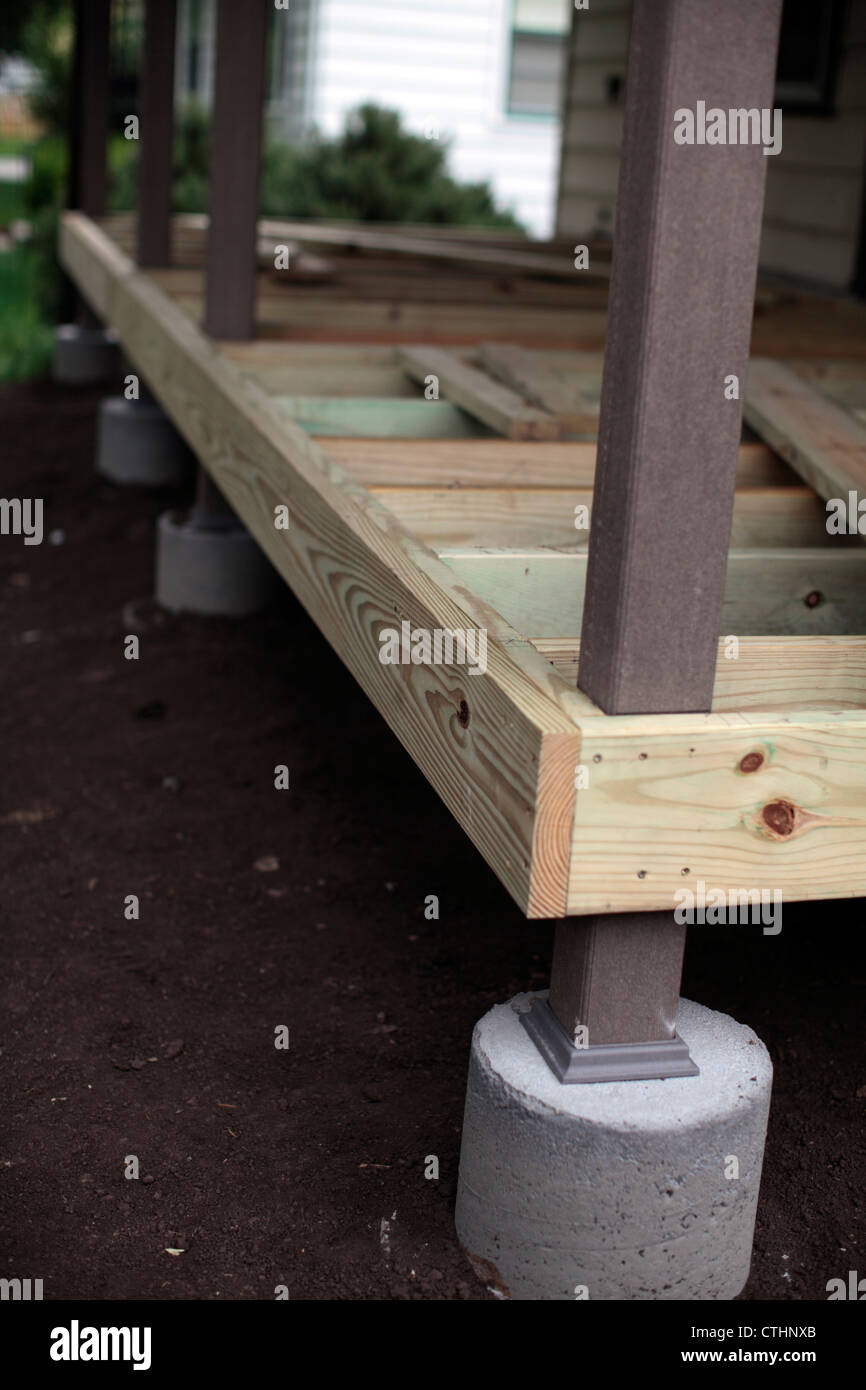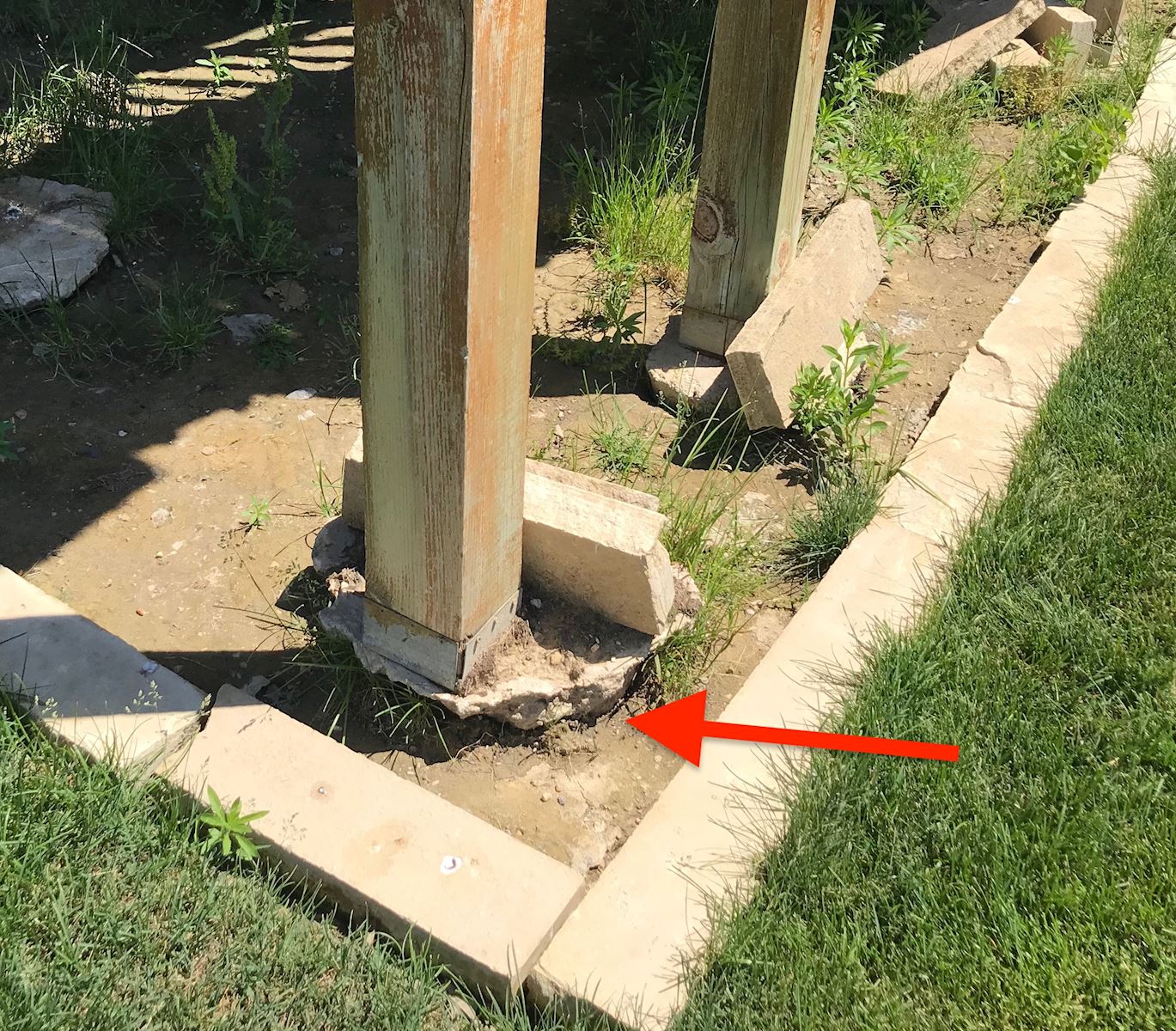Deck Footings 101: Navigating the Essentials for a Secure and Long Lasting Deck
Deck Footings 101: Navigating the Essentials for a Secure and Long Lasting Deck
Blog Article
Picking the Right Deck Footings for Security and Longevity
When it involves constructing a deck, among one of the most vital decisions you will certainly make is choosing the right grounds for stability and sturdiness. The longevity and safety and security of your deck depend greatly on the type of footings you choose, as they provide the important support and stability to hold up against the test of time. With a myriad of choices readily available, it can be frustrating to identify which grounds are best matched for your particular needs. In this discussion, we will check out the various kinds of deck footings, think about the vital aspects to weigh when deciding, and delve right into the benefits and drawbacks of different choices. By the end, you will certainly have a clearer understanding of the selections handy and be much better equipped to make a notified choice for your deck project.
Types of Deck Footings
These grounds are composed of a round opening filled up with concrete, which gives a strong structure for the deck posts. Concrete pier grounds are reasonably very easy to mount and supply excellent security, making them a preferred selection for several deck jobs.
An additional kind of footing is the helical stack footing. Helical piles are steel shafts with helical plates affixed to them. These grounds are mounted by screwing them right into the ground, which produces a safe foundation for the deck. Helical heap grounds are ideal for locations with tough dirt conditions, as they can be set up in practically any kind of dirt. If needed., they additionally enable for easy adjustment and progressing of the deck.
Additionally, some builders choose precast concrete footings. These grounds are made of sturdy concrete and can be found in different sizes and shapes to accommodate various deck styles. Precast concrete footings are hassle-free to install and provide a stable base for the deck framework.
Lastly, an additional choice is the post-in-anchor ground system. This kind of footing involves driving a steel support into the ground and affixing it to the deck message. It uses adaptability in regards to placing the deck posts and is ideal for decks with light-weight frameworks.
When selecting the appropriate kind of deck ground, it is vital to take into consideration elements such as dirt conditions, deck tons, and regional building ordinance (Deck Footings). Consulting with a specialist specialist or architectural engineer can assist make certain the proper footing is selected for a secure and steady deck
Factors to Take Into Consideration When Choosing Footings
When choosing the ideal footings for a deck, it is critical to meticulously consider various elements such as dirt problems, deck tons, and adherence to neighborhood building ordinance. These elements play a considerable role in guaranteeing the stability and durability of the deck structure.
One of the main elements to think about is the dirt problems. The kind of soil on which the deck will be built identifies the sort of grounds needed. As an example, decks built on sandy or loosened soils may need deeper footings to supply appropriate assistance and stop settling. On the various other hand, decks developed on clay or expansive soils may require grounds that can suit the dirt's tendency to increase and contract.
An additional essential aspect is the deck tons. The weight of the deck, including the products utilized and any type of potential online lots such as furnishings or celebrations, have to be thought about when picking grounds. The footings have to be designed to bear the weight of the deck and distribute it evenly to avoid any kind of structural problems or failings.
Finally, adherence to local structure codes is vital. Building codes differ from region to region, and it is necessary to adhere to the certain demands established by the neighborhood authorities. Deck Footings. These codes make certain that the deck is built securely and meets the needed criteria for structural stability and load-bearing ability
Concrete Grounds: Disadvantages and pros

When utilized as the structure you could try this out for a deck,Concrete grounds offer numerous benefits and disadvantages. On the silver lining, concrete footings provide exceptional stability and toughness. Concrete is a inflexible and solid material that can support hefty lots and withstand numerous weather problems. It also has a long life expectancy, making it a reputable selection for long-lasting use.
One more advantage of concrete footings is their flexibility. They can be put right into various sizes and shapes to suit numerous deck layouts and setups. Concrete footings can be personalized to fit the specific requirements and demands of the deck framework.
However, there are likewise some drawbacks to utilizing concrete footings. This can boost the total price of the deck job and might need expert aid.

Helical Piers Vs. Sonotubes: Which Is Much better?
In considering the foundation options for a deck, the contrast in between helical piers and sonotubes is crucial in establishing the remarkable choice. Helical piers, likewise known as screw heaps, are steel shafts with helical plates connected to them. They are twisted right into the ground making use of hydraulic equipment, supplying a secure and long lasting foundation for the deck. On the various other hand, sonotubes are round kinds made of cardboard or fiber material that are full of concrete. They are put in a hole went into the ground and supply support for the deck.
When it concerns security and longevity, helical piers have the top hand. The helical plates on the piers develop a strong grip with the dirt, moving or avoiding any movement of the deck. This is particularly valuable in locations with unstable or changing soil problems. Sonotubes, on the other hand, depend entirely on the concrete filling up for stability, which might not provide the exact same degree of my sources stamina and resistance.
In terms of setup, helical piers are fairly easier and faster to mount contrasted to sonotubes. The hydraulic equipment utilized to twist the piers into the ground guarantees a quick and reliable process. Sonotubes, on the various other hand, call for digging holes and putting concrete, which can be lengthy and labor-intensive.
In addition, helical piers are a more flexible option. If needed, they can be made use of in numerous dirt problems and can be readjusted or enhanced. Sonotubes, on the other hand, may call for extra support, such as rebar, in certain dirt problems or locations with high lots needs.
Choosing the Right Footings for Your Deck's Measurements
For optimal architectural honesty, it is important to meticulously pick the ideal grounds that straighten with site here the measurements of your deck. The measurements of your deck, including its elevation, size, and width, play a significant function in determining the type and dimension of grounds needed.
When selecting grounds for your deck, it is essential to consider the load-bearing ability of the soil. The weight of the deck, integrated with the weight of any kind of furnishings or people on it, puts in a significant force on the grounds (Deck Footings). For that reason, it is critical to choose grounds that can adequately support this weight without changing or sinking in time.
Larger decks with greater measurements need larger grounds to offer enough stability and assistance. The shape of the grounds, whether they are square or rounded, depends on the style and layout of the deck.
Final Thought
In verdict, selecting the best deck footings is vital for guaranteeing security and resilience. Factors such as the kind of grounds, the deck's dimensions, and the pros and cons of various choices must be thought about.
These grounds are composed of a cylindrical opening filled with concrete, which offers a strong foundation for the deck articles. Concrete pier footings are reasonably very easy to install and use superb stability, making them a prominent selection for several deck projects.
Precast concrete grounds are practical to install and offer a steady base for the deck structure.
It provides flexibility in terms of placing the deck blog posts and is appropriate for decks with light-weight frameworks.
Concrete grounds offer numerous advantages and downsides when utilized as the foundation for a deck.
Report this page